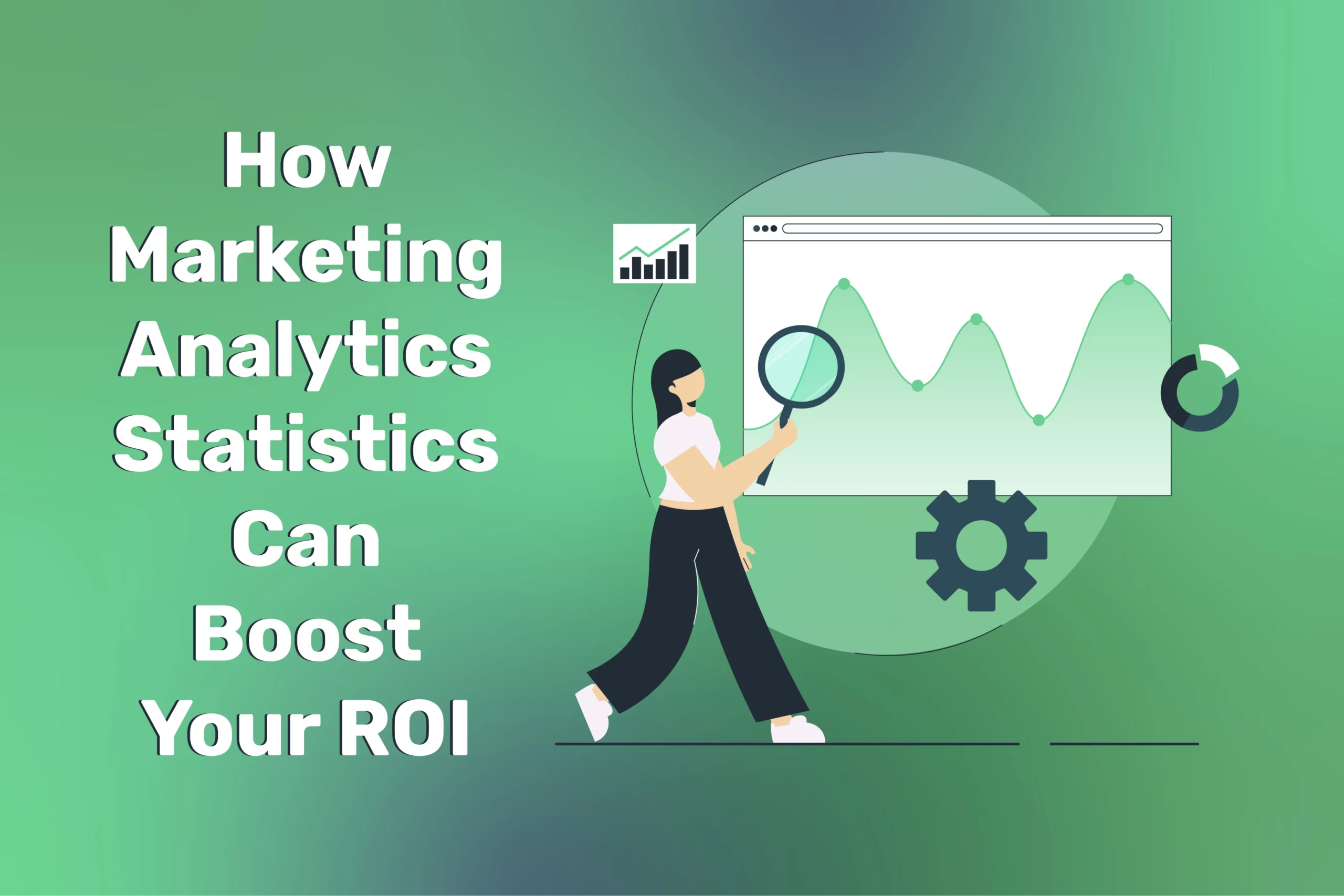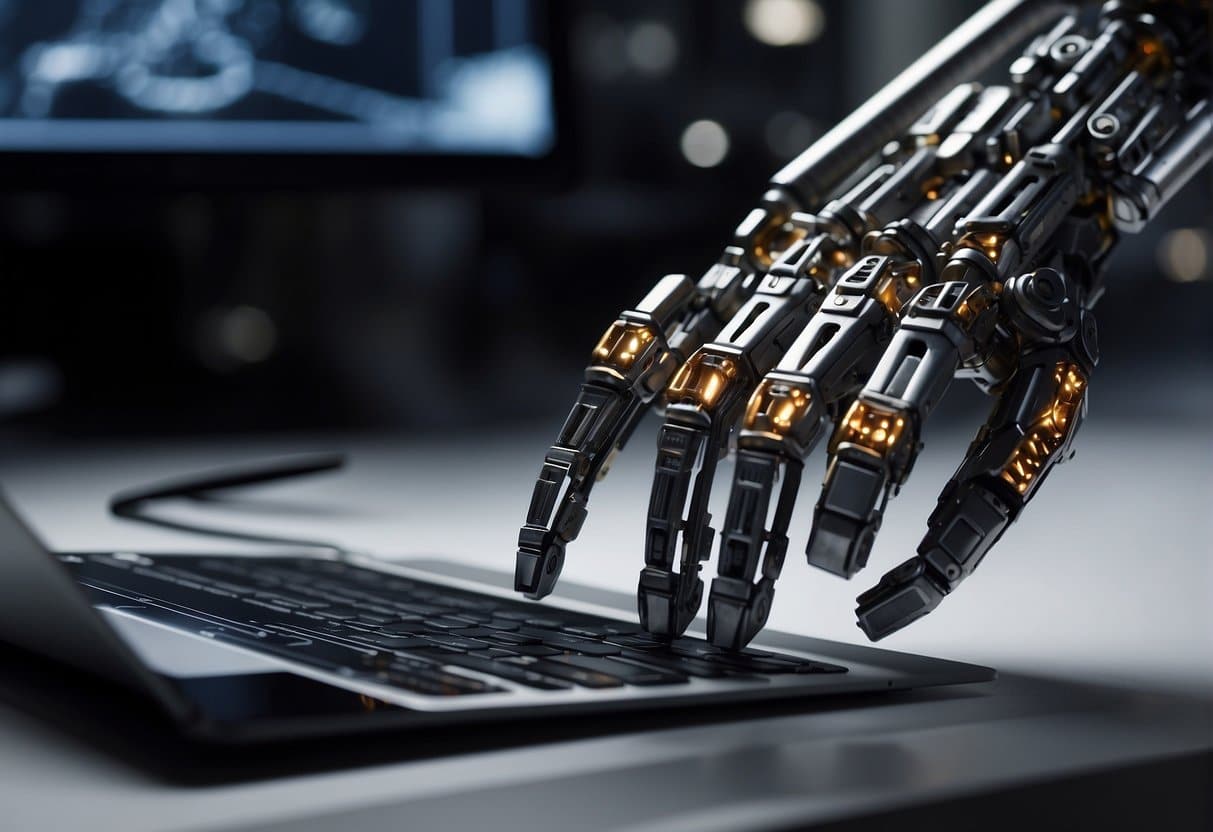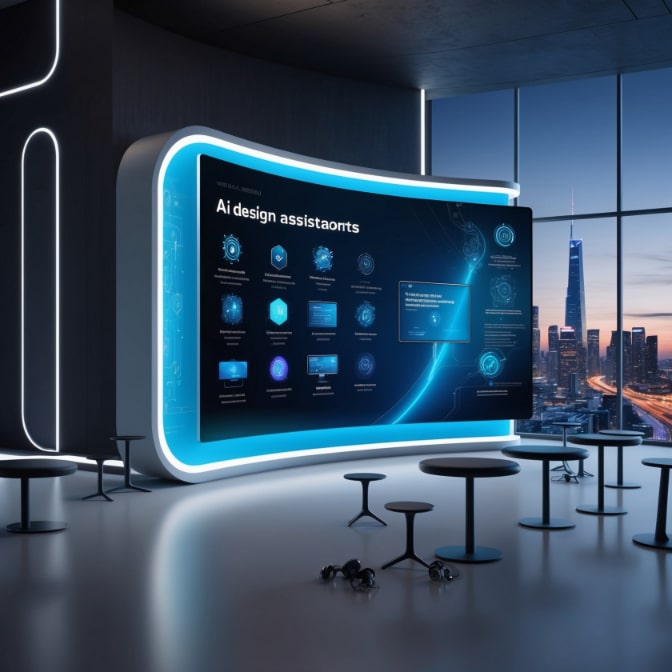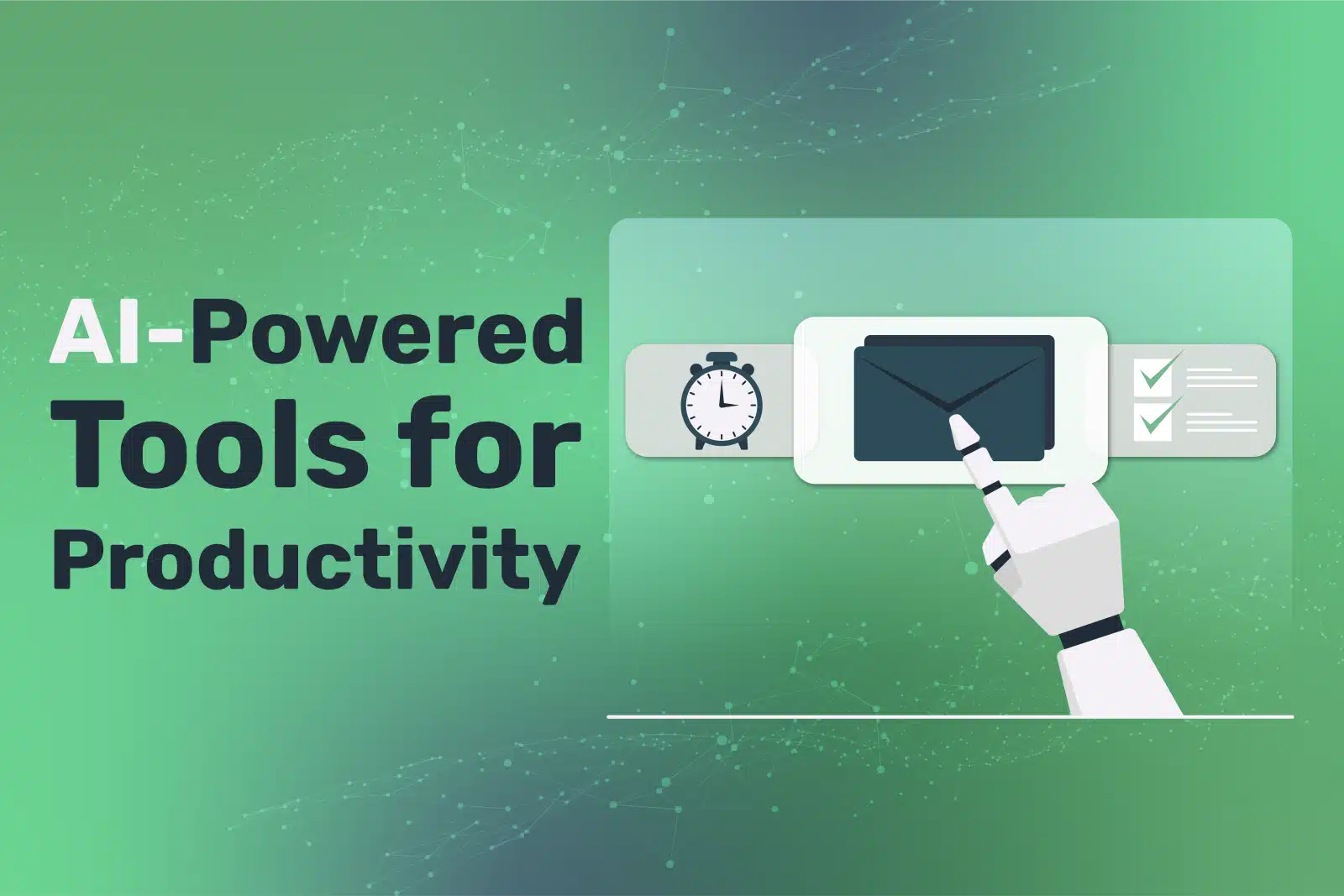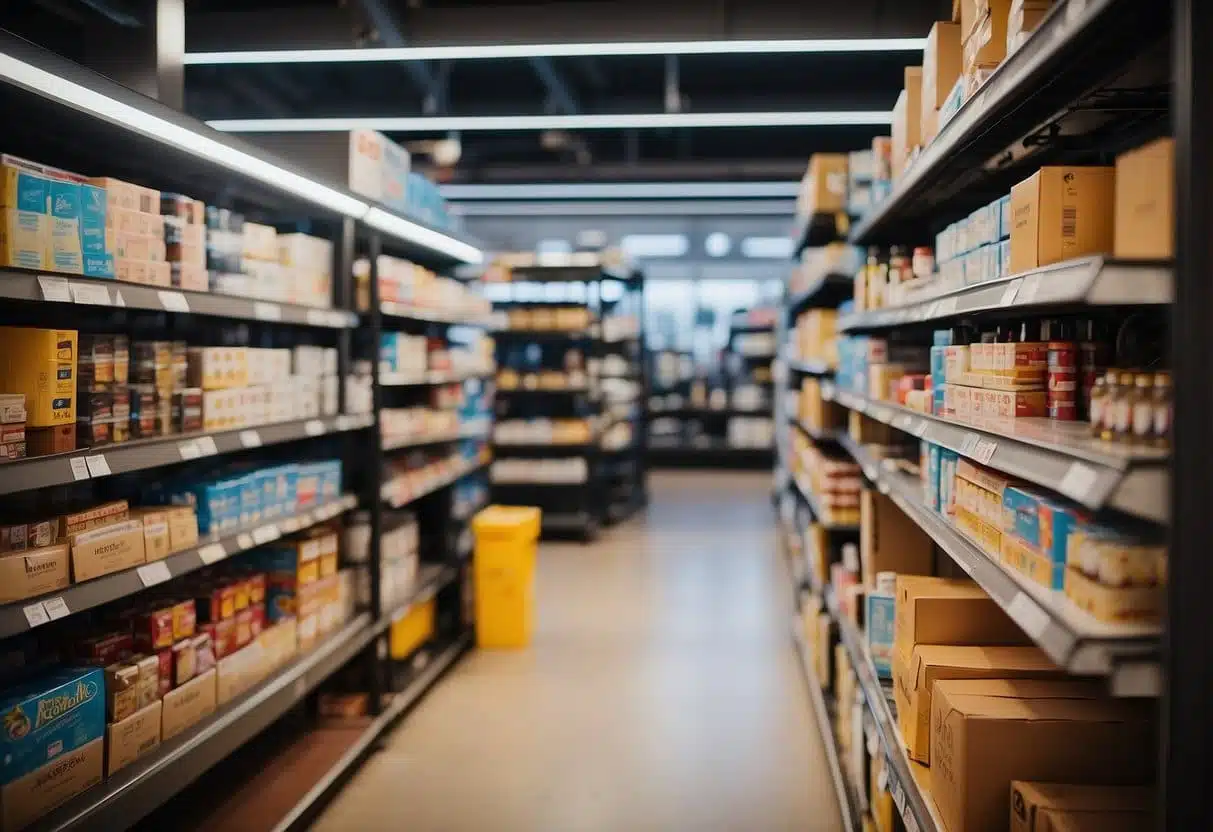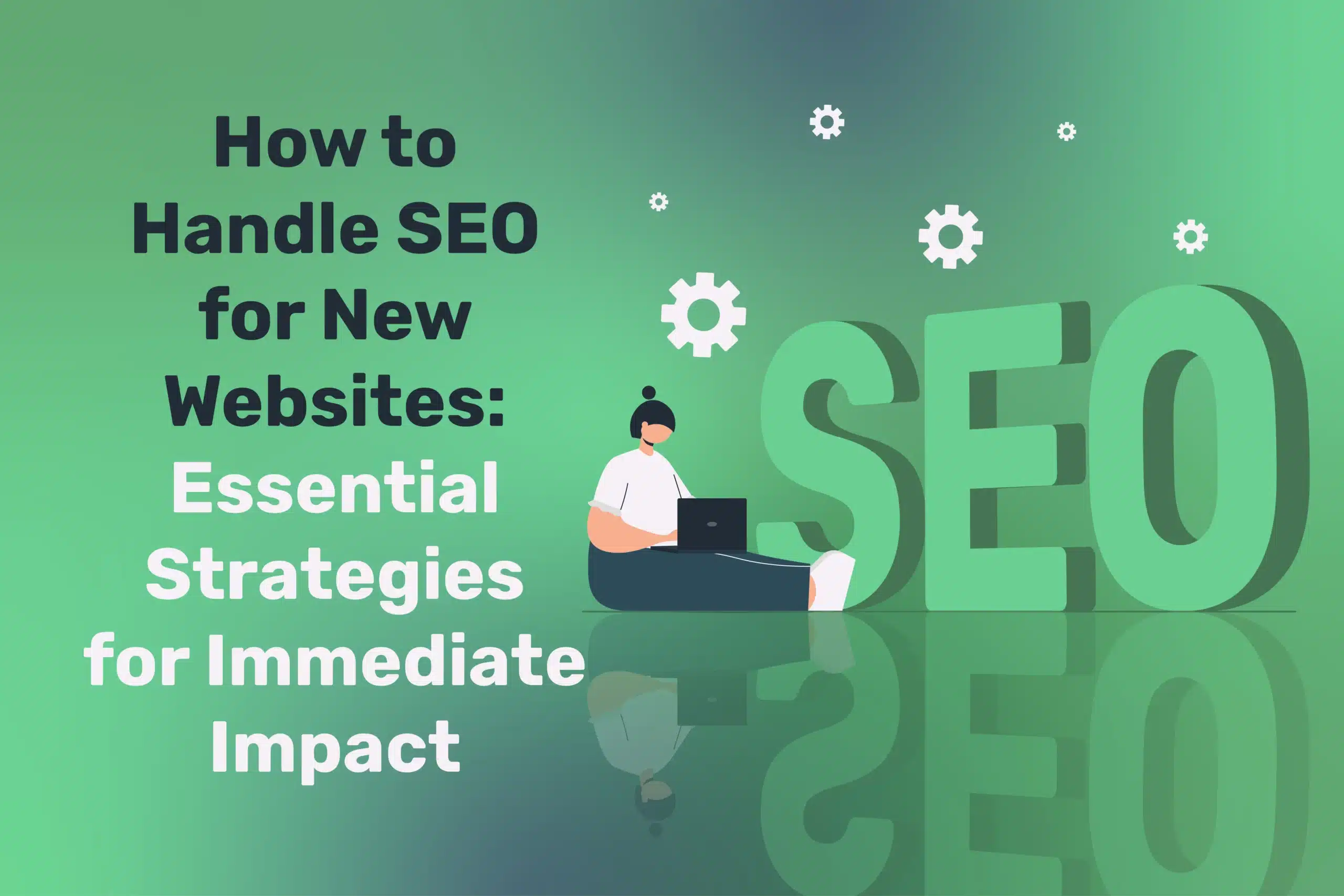
AI and Video Production: From Automated Editing to Personalised Content
Table of Contents
Video production has always been a time-intensive craft—organising footage, selecting the best takes, trimming dead space, creating visual effects, and finalising edits. In 2025, AI and video production are revolutionising each stage of the process, from automated rough cuts to advanced post-production enhancements and even one-to-one personalisation of the final output. This synergy shortens production timelines and expands creative possibilities, especially for brands seeking to produce content at scale.
In this article, we examine how AI transforms video editing, visual effects, and content personalisation, revealing strategies for adopting these new tools while maintaining the human artistic touch that keeps brand videos unique and captivating.
“AI can handle the grunt work—organising clips, suggesting cuts, or applying quick enhancements. Freed from repetitive tasks, video teams can devote more time to storytelling and creativity,” notes Ciaran Connolly, Director of ProfileTree.
The Rise of AI in Video Production
Video production has always been a time-intensive process, requiring meticulous editing, creative storytelling, and technical precision. However, with the rapid evolution of technology, AI and video production are now merging to revolutionise how brands create, enhance, and distribute content. From automating tedious editing tasks with powerful AI video generators to enabling hyper-personalisation, AI is transforming the industry at an unprecedented pace. Let’s explore how AI is reshaping video production and unlocking new creative possibilities.
Explosive Demand for Video Content
From short social ads to multi-episode brand series, demand for video content has soared, challenging video teams to produce higher volumes swiftly. AI solutions step in to accelerate editing workflows, handle repetitive tasks, and propose polished sequences, meeting that demand without ballooning budgets.
Advances in Machine Learning
Powerful image recognition, speech-to-text, and generative AI capabilities enable software to understand footage context—classifying scenes by environment, detecting faces, and automatically generating transitions. Modern AI-driven tools can even up-res older footage or remove unwanted background noise with precision filters, enhancing video quality effortlessly.
Cost and Time Savings
Editing that previously took hours or days can now be completed in half the time, freeing editors to refine narrative arcs and focus on creative storytelling. Smaller brands and SMEs can produce professional-level videos with fewer human editing hours, bridging the gap with bigger competitors and maximising production budgets.
Automated Editing: The Foundations
Editing has always been one of the most time-consuming aspects of video production, demanding precision, creativity, and countless hours of refining footage. With the rise of AI and video production, this process is becoming significantly more efficient. AI-powered tools now automate key editing tasks, from rough cut assembly to intelligent scene tagging, allowing creators to focus on storytelling rather than tedious manual work. Let’s explore how AI-driven editing solutions are laying the foundation for a faster, smarter, and more seamless post-production workflow.
Rough Cut Assembly
Some AI tools, like PromeAI or Frame.io with AI add-ons, sift through raw footage—detecting stable scenes, best takes, or matching shot lists—and produce an initial timeline. This eliminates tedious manual scanning, letting editors jump straight to fine-tuning. Scenes with out-of-focus or shaky footage can be automatically flagged or removed.
Auto-Transcriptions and Subtitle Generation
AI speech-to-text can create accurate transcripts directly from your raw audio, streamlining subtitle creation or script alignment. Editors can then quickly locate dialogue-based clips by searching text phrases. This synergy aids branding teams who want multi-lingual subtitles swiftly.
Scene Detection and Tagging
Powerful image recognition can identify objects, faces, or locations, applying metadata tags automatically. For instance, AI can label clips as “outdoor shots,” “crowd scenes,” or “close-ups of actor A.” This helps large productions keep track of thousands of clips, drastically cutting search times.
Intelligent Music/Audio Sync
Some platforms match background music beats to video transitions. Editors load a royalty-free music track from a sound library, and the AI suggests cut points aligned with major beats or mood shifts. This approach enhances the final pacing with minimal guesswork. This approach enhances the final pacing with minimal guesswork.
AI-Assisted Visual Effects and Enhancement
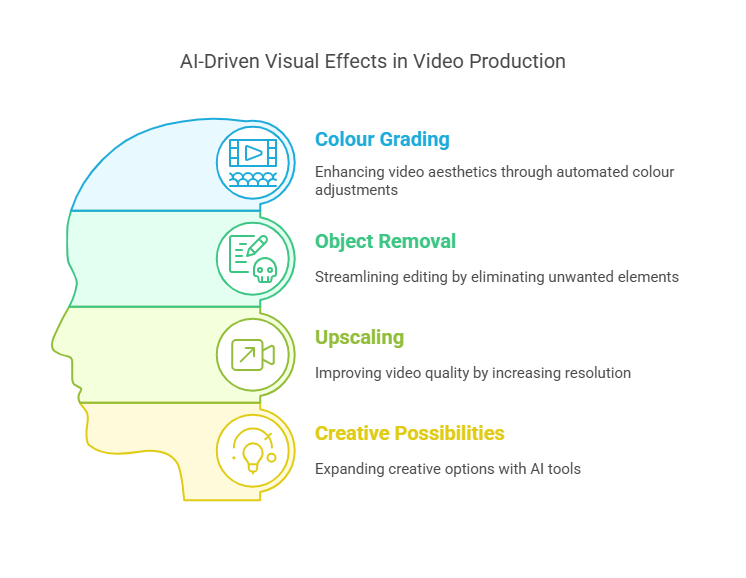
While AI-driven editing streamlines workflows and speeds up post-production, its capabilities extend far beyond basic cuts and sequencing. AI and video production are now transforming visual effects, making once time-consuming enhancements—like colour grading, object removal, and upscaling—more efficient and accessible. These advancements not only improve production speed but also open up new creative possibilities. Let’s explore how AI is revolutionising visual effects, making high-end production quality more achievable than ever.
Colour Grading Suggestions
Tools like Adobe’s Sensei or Blackmagic DaVinci Resolve AI modules analyse each shot, proposing colour corrections that unify the entire sequence’s look. While final tweaks remain an artistic choice, these suggestions expedite the baseline colour pass.
Object Removal and Rotoscoping
Removing an unwanted background object (like a stray boom mic or passing car) historically required manual frame-by-frame rotoscoping. AI-based object removal can track the object across frames, painting it out seamlessly in far less time.
Upscaling and Restoration
Old or lower-resolution footage can be upscaled with AI’s super-resolution techniques. Denoising or removing artefacts also becomes more precise, preserving details that basic filters might smear. This breathes new life into historical brand archives or user-generated content, allowing them to fit 4K or even 8K standards.
Deepfake Elements or Synthetic Characters
While ethically contentious if misused, some brands employ controlled “digital doubles” or synthetic backgrounds for imaginative effect. For instance, a brand might insert a virtual influencer cameo or create a digital version of a founder to appear in global language variations. Strict brand guidelines and disclaimers often mitigate potential misuse concerns.
Personalised Video Content
AI is not just revolutionising how videos are edited and enhanced—it’s also changing how they connect with audiences. AI and video production now enable brands to create highly personalised video content, tailoring messaging, visuals, and experiences to individual viewers at scale. By leveraging AI-driven insights, businesses can boost engagement, increase retention, and deliver hyper-relevant content that resonates with their target audience. Let’s explore how AI is reshaping personalised video content and making audience-driven storytelling more impactful than ever.
Personalisation: The Next Frontier
AI can inject dynamic user information—such as name, location, or purchase history—right into a video. Imagine sending an email with a link to a short clip greeting: “Hi John, see how we improved your product usage last month.” This level of personalisation fosters deeper engagement and brand loyalty.
Data-Driven Video Generation
Platforms like Spirable or Idomoo combine template animations with user data, generating unique versions for thousands of recipients. For example, an insurance company might show a user’s actual renewal date and policy summary in a short animated reel. While best suited for direct marketing or B2C contexts, it can also serve B2B with data-driven updates.
Ethical and Technical Considerations
Over-personalisation can feel intrusive—some recipients may find it unsettling to see personal info displayed in a video. To avoid this:
- Provide opt-outs to give users control over their data usage.
- Ensure secure handling of private data, disclaimers, and compliance with GDPR and other data protection regulations.
- Be transparent about how user data is collected and used.
“When done respectfully, personalisation makes customers feel uniquely valued. Tread carefully, ensuring transparency and an opt-out if they find it too personal,” advises Ciaran Connolly.
Integrating AI into Existing Video Workflows
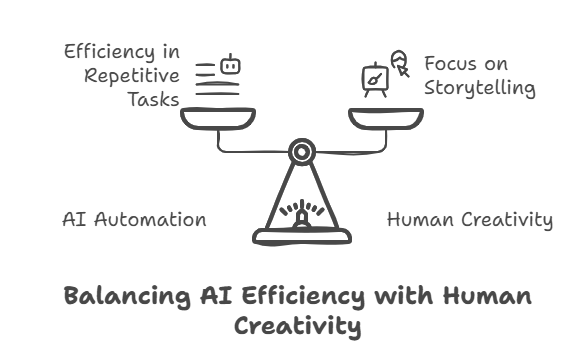
Adopting AI and video production tools doesn’t mean replacing human creativity—it’s about enhancing workflows and optimising efficiency. AI can handle repetitive tasks like clip organisation, rough cuts, and colour correction, allowing editors and producers to focus on storytelling and artistic direction. However, successfully integrating AI requires a strategic approach, from training teams to ensuring seamless collaboration between AI and human input. Let’s now examine how production teams can integrate AI effectively while maintaining creative control.
Adopting a Hybrid Approach
Full automation rarely suits high-tier brand videos that require a strong creative narrative. A balanced approach sees AI handle clip organisation, rough cutting, or basic colour correction while human editors maintain storytelling flair, pacing, and emotional tone. This synergy ensures quality with time savings.
Training Editors and Producers
Teams might worry that AI features threaten their roles. Emphasise that these tools reduce repetitive tasks, freeing them for more creative, strategic thinking. Offer hands-on workshops to help staff see how intuitive these AI features can be—like drag-and-drop for auto-labelling or a single click for recommended transitions.
Data Infrastructure
Large-scale AI usage, especially for personalisation or advanced analytics, may require robust data pipelines. Storing user data or footage metadata in a consistent format, ensuring strong security and maintaining compliance, fosters smooth AI integration. Collaboration with IT and data teams is often essential.
Pilot Testing
Before overhauling your entire post-production pipeline, run a pilot on a smaller project—such as a short product teaser or a how-to clip. Evaluate real-time time saved, staff feedback, and final quality. If the pilot shows promise, expand AI integration to bigger or more frequent productions.
Overcoming AI Video Production Challenges

By strategically integrating AI, brands can overcome production challenges while maintaining quality and creative integrity. Let’s examine some of the key hurdles AI video production faces and how businesses can tackle them effectively.
Potential Over-Reliance
If staff rely too heavily on AI suggestions, unique creativity or brand personality may suffer. Encourage them to treat AI outputs as a starting point—fine-tune transitions, add brand flair, and verify consistent messaging to maintain quality.
Inconsistent Results with Complex Shots
AI-based rotoscoping or object removal can struggle with complicated motion or low lighting. Manual intervention may be necessary. Factor in these potential limitations when planning projects to avoid underestimating project scopes.
Ethical Pitfalls (Deepfakes)
While deepfake technology can enhance brand experiences or create certain creative illusions, misusing it to depict individuals doing or saying things they never actually did crosses ethical lines. Clear disclaimers and internal brand policies are crucial to maintain integrity and trust.
Budget vs. Long-Term Savings
Pro-level AI solutions or add-on modules—such as advanced colour grading tools or robust personalisation platforms—can be pricey initially. Evaluate the total cost alongside time savings and potential revenue from more efficient, personalised marketing. Often, ROI appears over multiple projects, not just the first one.
Real-World Impact of AI Video Production
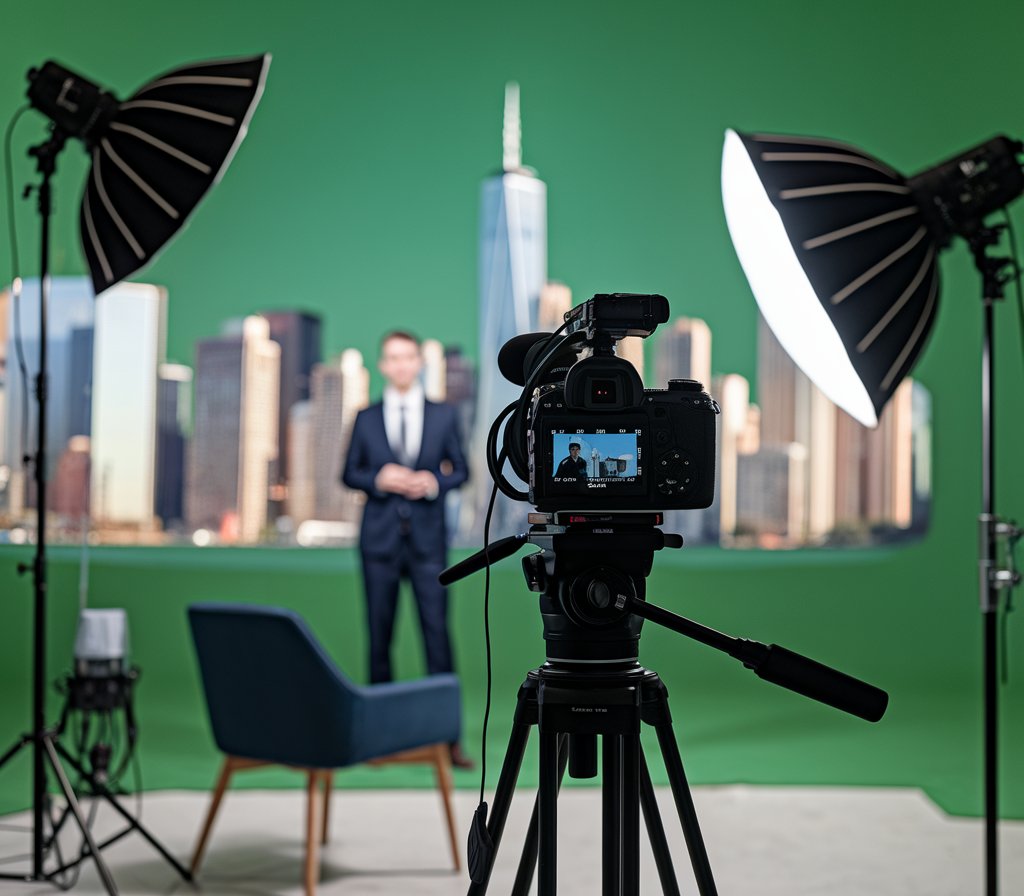
While the integration of AI and video production streamlines workflows and enhances creativity, its true value lies in the measurable results it delivers. From faster production cycles to improved audience engagement, AI is already reshaping the way brands approach video content. Let’s explore the real-world impact AI is having on video production and how businesses are leveraging these advancements to stay ahead in an increasingly competitive digital landscape.
Speed to Market
Brands producing monthly content can potentially double their output frequency thanks to AI-based editing. This increased presence helps them remain fresh in user feeds, adapting quickly to trending topics or product launches.
Consistent Brand Quality
AI ensures that each new video adheres to brand guidelines, such as default transitions, colour grading presets, and motion graphics templates. This uniform aesthetic cements brand identity across multiple videos and channels.
Higher Engagement Rates
Personalised or sharply edited videos tend to achieve improved watch times and click-through rates. Some marketing campaigns report a 30–40% engagement boost once advanced post-production techniques or personalised elements roll out.
Upskilled Teams
As editors and producers refine their AI usage, they develop new skills—leading to more innovative storytelling and possibly incorporating advanced motion design or interactive elements. This professional growth helps your brand stay at the forefront of digital media innovation.
“AI-driven tools aren’t just about speed—they help lift production quality, letting teams experiment and refine concepts that might’ve been too time-consuming otherwise,” emphasises Ciaran Connolly.
Looking Ahead: Future Prospects of AI in Video

AI has already transformed video production, but its potential is far from fully realised. As technology continues to evolve, new innovations in real-time editing, hyper-personalisation, and AI-driven collaboration are set to redefine the industry. Let’s explore the next wave of advancements that will shape the future of AI and video production, pushing creative and technical boundaries even further.
Real-Time Editing and Live AI
AI is set to revolutionise live broadcasts by auto-switching camera angles based on speaker detection or crowd reactions. Real-time background removal, dynamic AR overlays, and instant editing could reshape how brands handle live events or sports coverage.
Full Customisation for Each Viewer
Next-level personalisation may weave real-time data—such as local weather or a user’s last viewed product—into on-the-fly generated videos. Instead of a single final edit, each user could see a version tailored to them, further merging marketing automation with creative video production.
Collaborative AI Tools
Future AI tools may enable multiple remote editors to work in tandem on the same timeline, with AI assisting in reconciling suggested cuts or visual effects layers. This collaborative environment speeds up large-scale productions, bridging geographical distances.
Lighter Production Footprints
AI could also contribute to sustainability by predicting energy usage for renders or optimising workflows to minimise re-shoots. As environmentally friendly practices become more prevalent, AI-based resource planning may become a standard in video production.
Embracing AI to Transform Video Production Workflows
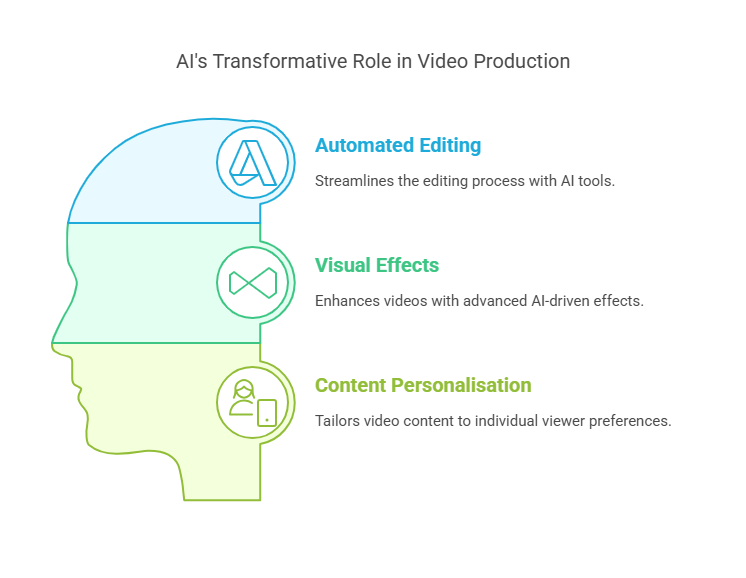
From streamlining editing tasks to adding advanced visual effects and even tailoring final videos for each viewer, AI is reshaping how brands craft and deliver moving images. The result is speedier turnarounds, more consistent brand identity, and the potential for deeply personalised content that resonates.
Success demands thoughtful integration—balancing the efficiency and consistency AI offers with the creative artistry that keeps viewers emotionally invested. By training teams, piloting solutions, and refining processes, video producers can harness these evolving tools to amplify quality while reducing repetitive drudgery.
In a competitive digital sphere where video is king, adopting AI-driven production is no longer a novelty but a strategic necessity for staying on top and captivating modern audiences.
